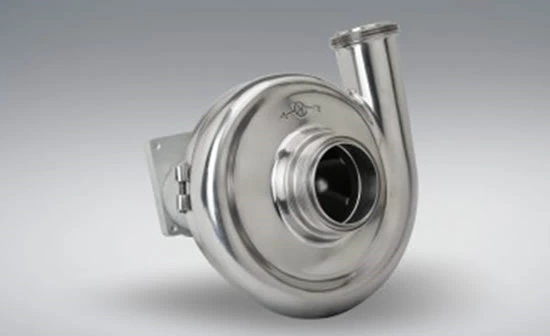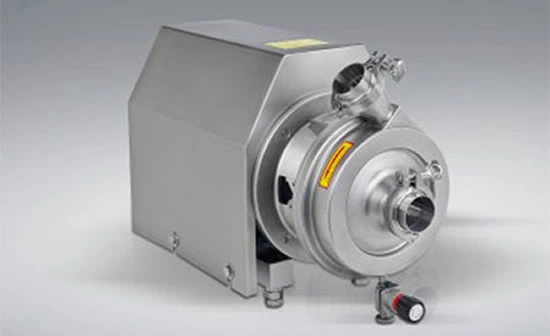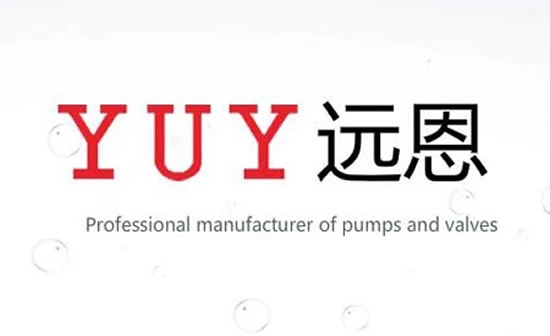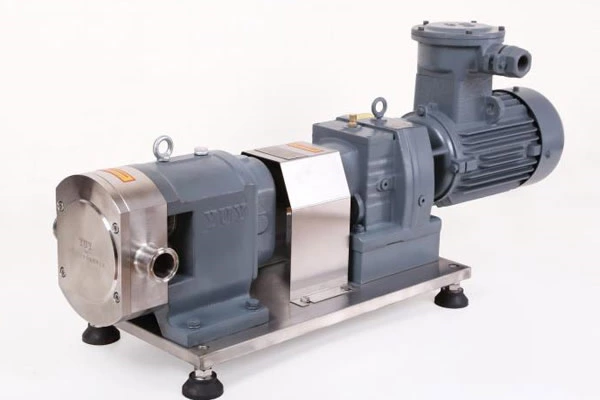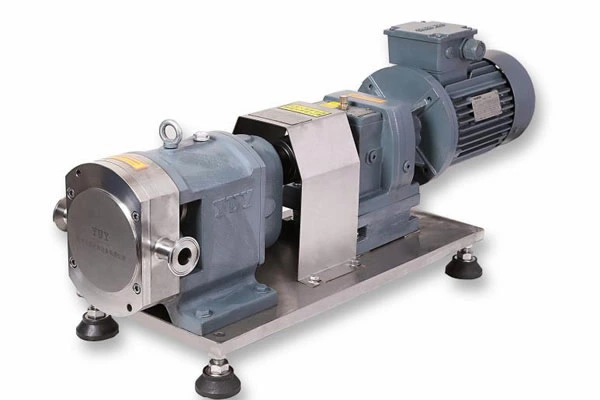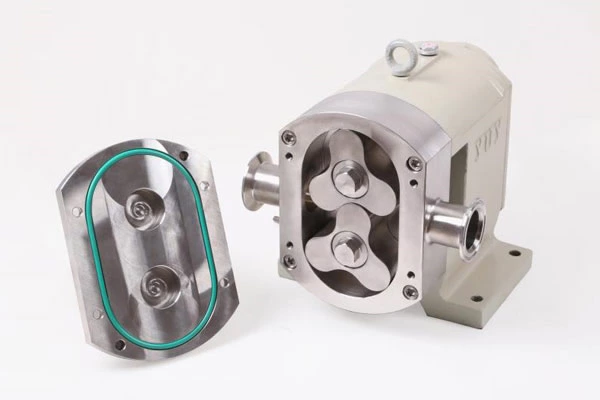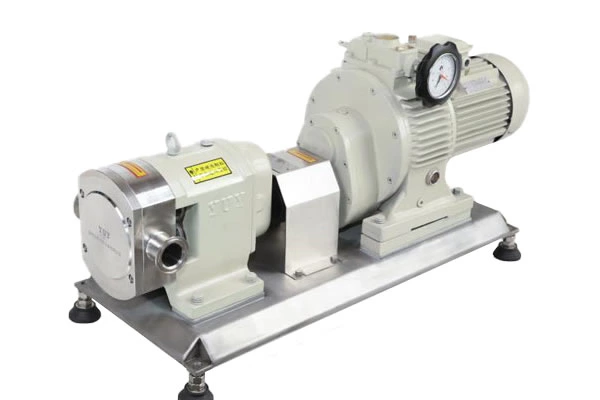Sanitary pump selection, use method and maintenance
1. Selection and installation of sanitary pump
The sanitary pump should be selected according to the liquid to be transported, and the required performance should be checked, and the suction and discharge conditions should be analyzed, whether it is intermittent or continuous operation, etc. Sanitary pumps should usually operate at or close to the pressure and flow conditions designed and specified by the manufacturer. The following rechecks should be carried out when the pump is installed:
- The size, location, and elevation of the foundation should meet the design requirements, the anchor bolts must be properly and correctly fixed in the concrete foundation, and the machine should not be missing, damaged or rusted;
- According to the characteristics of the medium conveyed by the pump, the materials of main parts, shaft seals and gaskets should be checked if necessary;
- The leveling and alignment of the pump should meet the requirements of the equipment technical documents. If there is no requirement, it should meet the requirements of the current national standard "General Specification for Construction and Acceptance of Mechanical Equipment Installation Engineering"
- All the pipes connected to the pump body, the installation of pipe fittings and the cleaning requirements of the lubricating oil pipes shall comply with the relevant national standards.
2. Use of sanitary pump
The trial operation of the sanitary pump should meet the following requirements:
- The steering of the driver should be the same as that of the pump;
- Find out the steering of the pipeline pump and the coaxial pump;
- There should be no looseness in each fixed connection part, and the specification and quantity of lubricant added to each lubrication part should meet the requirements of the equipment technical document;
- The parts with pre-lubrication requirements should be pre-lubricated according to regulations;
- All indicating instruments and safety protection devices should be sensitive, accurate and reliable;
- The turning gear should be flexible and free of abnormal phenomena;
- The high temperature pump should be preheated before trial operation, the temperature should rise uniformly, and the hourly temperature rise should not exceed 50℃; the temperature difference between the surface of the pump body and the process pipeline with the working medium inlet should not exceed 40℃;
- Set up a connection device to eliminate the influence of temperature rise, and set up a bypass connection device to provide a source of cooling water.
Pay attention to the following points when operating the centrifugal pump:
- It is forbidden to run without water, do not adjust the suction to reduce the displacement, and it is forbidden to run under too low flow;
- Monitor the operation process, completely prevent the stuffing box from leaking, use new stuffing when replacing the stuffing box;
- Ensure that the mechanical seal has sufficient flushing water flow, and excessive water flow is prohibited for water-cooled bearings;
- Do not use too much lubricant;
- Follow the recommended cycle for inspection. Establish operating records, including operating hours, adjustment and replacement of fillers, adding lubricants and other maintenance measures and time. The centrifugal pump suction and discharge pressure, flow rate, input power, temperature of washing liquid and bearing, and vibration should be measured and recorded regularly.
- The main engine of the centrifugal pump relies on the atmospheric pressure to pump the water from the low place to the high place, and the atmospheric pressure can only support a water column of about 10.3m at most, so the main engine of the centrifugal pump cannot work 12 meters away from the water surface.
3. Maintenance of sanitary pump
3.1 Analysis of the failure of the mechanical seal of the sanitary pump
The shutdown of the sanitary pump is mainly caused by the failure of the mechanical seal. Most of the failure manifestations are leakage. The reasons for leakage are as follows:
- The main reasons for the leakage of the sealing surface of the dynamic and static rings are: the flatness of the end surface, the roughness does not meet the requirements, or the surface is scratched; there is particulate matter between the end surfaces, which causes the two ends to not operate in the same way;
- The main reasons for the leakage of the sealing ring of the compensation ring are: the gland is deformed and the pre-tightening force is not uniform; the installation is not correct; the quality of the sealing ring does not meet the standard; the type of the sealing ring is incorrect.
The actual use results show that the most failure of the sealing element is the end face of the dynamic and static ring, the centrifugal pump machine seals the dynamic, and the crack on the end face of the static ring is a common failure phenomenon. The main reasons are:
- During installation, the sealing surface gap is too large, and the flushing fluid is too late to take away the heat generated by the friction pair; the flushing fluid leaks from the sealing surface gap, causing the end surface to be overheated and damaged.
- The liquid medium vaporizes and expands, so that the two end faces are separated by the vaporization and expansion force. When the two sealing faces are firmly attached, the lubricating film is destroyed and the end face surface is overheated.
- The liquid medium has poor lubricity, and the operating pressure is overloaded, and the tracking and rotation of the two sealing surfaces are not synchronized. For example, the high-speed pump speed is 20445r/min, the center diameter of the sealing surface is 7cm, and the linear speed of the pump is as high as 75 m/s after the pump is running. When a sealing surface lags behind and cannot track rotation, the instantaneous high temperature causes the sealing surface to be damaged.
- The orifice plate or filter screen of the sealing flushing fluid is blocked, resulting in insufficient water volume and failure of the mechanical seal.
In addition, the sliding grooves on the sealing surface and the gaps on the end faces cause the failure of the sealing element. The main reasons are:
- The liquid medium is not clean and has tiny hard particles. It slides on the sealing surface at a very high speed, which will scratch the surface of the end surface and cause it to fail.
- The coaxiality of the transmission parts of the pump is poor. After the pump is turned on, the end face is swayed and rubbed once per revolution, and the moving ring runs out of concentricity, causing the end face to vaporize, overheat and wear.
- The frequent occurrence of hydraulic characteristics of the liquid medium causes the pump unit to vibrate, causing the sealing surface to be misaligned and fail.
The corrosion of the sealing element by the liquid medium, stress concentration, soft and hard material coordination, erosion, auxiliary seal 0-ring, V-ring, concave ring and liquid medium incompatibility, deformation, etc. will cause damage and failure of the mechanical seal surface, so The damage form must be analyzed comprehensively to find the root cause to ensure the long-term operation of the mechanical seal.
3.2 Requirements after the sanitary pump stops running
- After the sanitary pump stops running, the inlet valve of the pump should be closed, and the valves of the auxiliary system should be closed in turn after the pump has cooled down.
- The shutdown of the high-temperature pump should be carried out in accordance with the provisions of the equipment technical documents. After parking, the car should be turned for a half circle every 20 to 30 minutes until the temperature of the pump body drops to 50°C.
- When the cryopump is stopped, when there is no special requirement, the pump should always be filled with liquid; the suction valve and discharge valve should be kept normally open; the cryopump with double-end mechanical seal, the liquid level controller and the sealing liquid in the pump seal cavity should be kept open. Maintain the grout pressure of the pump.
- For pumps that transport media that are easy to crystallize, solidify, and precipitate, stop the pump to prevent blockage, and flush the pump and pipeline with clean water or other media in time. ⑤Drain the liquid accumulated in the pump to prevent rust and frost cracking.
3.3. Storage of the sanitary pump
- The un-installed pump should be coated with a suitable anti-rust agent on the unpainted surface. Bearings lubricated with oil should be filled with proper oil. Bearings lubricated with grease should only be filled with one type of grease, do not use Mix grease.
- Pump clean liquid for a short time, flush, suction pipeline, discharge pipeline, pump casing and impeller, and drain the flushing liquid in pump casing, suction pipeline and discharge pipeline side by side.
- Drain the oil in the bearing box, add clean oil, thoroughly clean the grease, and then fill with new grease.
- Seal the suction port and discharge port, store the pump in a clean, dry place, protect the motor windings from moisture, and spray the inside of the pump casing with anti-rust and anti-corrosion liquid.
- The pump shaft rotates once a month to avoid freezing and lubricate the bearings.



